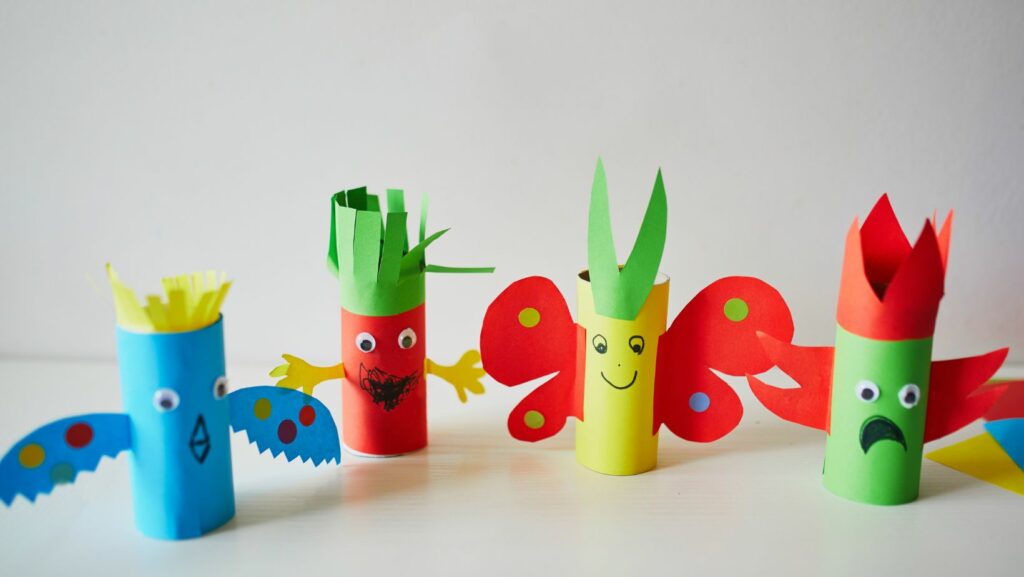In a world where it’s increasingly important to be eco-conscious, green crafts have emerged as a fun, creative, and sustainable hobby. They’re not just for the environmentally savvy; anyone can get involved. From repurposing old materials to creating beautiful, earth-friendly art, green crafts are revolutionizing the way we think about DIY projects.
Green Crafts
 Dive into the vibrant sphere of green crafts. Let’s unfold its facets and investigate its growing popularity. Green crafts embody a realm where creativity meets sustainability. They encompass any do-it-yourself, or DIY, project that involves repurposing discarded or recyclable materials into new items. From turning old denim into a stylish handbag to transforming wine corks into ornate wall-hangings, green crafts represent an approach that saves materials from the landfill. This practice not only promotes inventive ways to reuse materials, but also embraces the ethos of sustainability, offering a greener alternative to conventional art forms and consumer products.
Dive into the vibrant sphere of green crafts. Let’s unfold its facets and investigate its growing popularity. Green crafts embody a realm where creativity meets sustainability. They encompass any do-it-yourself, or DIY, project that involves repurposing discarded or recyclable materials into new items. From turning old denim into a stylish handbag to transforming wine corks into ornate wall-hangings, green crafts represent an approach that saves materials from the landfill. This practice not only promotes inventive ways to reuse materials, but also embraces the ethos of sustainability, offering a greener alternative to conventional art forms and consumer products.
The Rise of Eco-Friendly Artisanship
Eco-friendly artisanship is ascending, gaining an increasing appreciation globally. Concerns over waste production, and reverence for sustainability, set the stage for the breakthrough of green crafts. As people grow more aware of their carbon footprint, there’s a surge in interest for crafts that don’t cause any environmental harm. Moreover, the DIY ethos, bolstered by online tutorials and the desire for unique, handmade items, empowers people to make their own sustainable creations. Consequently, environmentally-conscious artists turn to green crafts, united by a shared commitment to eco-friendly practices and artisanship.
Benefits of Green Crafts
 The allure of green crafts extends beyond simple aesthetics. They represent a symbiosis of artistic expression and environmental stewardship, offering numerous advantages visible in reduced environmental impact, and substantial personal and community benefits.
The allure of green crafts extends beyond simple aesthetics. They represent a symbiosis of artistic expression and environmental stewardship, offering numerous advantages visible in reduced environmental impact, and substantial personal and community benefits.
Green crafts combat the growing problem of waste generation. They give a second life to discarded items that might otherwise add to landfill loads. For instance, a wine bottle can seamlessly transform into a chic vase. Likewise, worn-out denim could become an artsy tote bag. By utilizing materials already in play, green crafts reduce the demand for new production processes, effectively curtailing carbon emissions and conserving natural resources. They echo the foundation of the three Rs: Reduce, Reuse, and Recycle, thereby aligning creativity with sustainability.
Personal and Community Benefits
Green crafts extend a wealth of benefits personally and communally. On a personal level, crafting proves therapeutic. It’s a form of self-expression that bolsters creativity and mental health. Green crafting, in particular, fosters environmental consciousness, ingraining the values of sustainable and ethical consumption in practitioners.
Communally, green crafts build bridges. They offer engaging ways to unite communities around eco-conscious activities. Green crafting workshops, for instance, are increasingly popular. They’re social hubs, turning environmentalist craftsmanship into shared experiences. These gatherings not only champion creativity but cultivate an understanding of waste management and environmental preservation, fostering a sense of collective environmental responsibility.
Popular Types of Green Crafts
 In the diverse sphere of green crafts, a multitude of crafting styles reign, largely distinguished by the materials put into service. A close inspection unveils two predominant types: those using recycled and upcycled materials, and others relying on natural and sustainable resources.
In the diverse sphere of green crafts, a multitude of crafting styles reign, largely distinguished by the materials put into service. A close inspection unveils two predominant types: those using recycled and upcycled materials, and others relying on natural and sustainable resources.
Crafts employing recycled and upcycled materials essentially transform the old into the new, keeping the spirit of the Reduce, Reuse, and Recycle principles alive. Examples include collage art created from old magazines, candleholders carved from discarded wine bottles, or sculptures molded out of automotive scraps. Each piece of art, expressing the alchemy of recreation, reduces waste generation in its own small yet significant way.
Natural and Sustainable Materials
Crafts that take advantage of natural and sustainable materials reflect a gentler synergy between artisanry and nature. Here, creators favor materials like wood, organic cotton, or bamboo that can either regenerate quickly or have a negligible environmental footprint. Pictorially, these browse like biodegradable canvas bags painted with eco-friendly colors, wooden furniture made without harmful varnishes, or jewelry made from hemp twine. Each of these, by embracing natural elements, contribute to an ecological balance in the craft industry.

